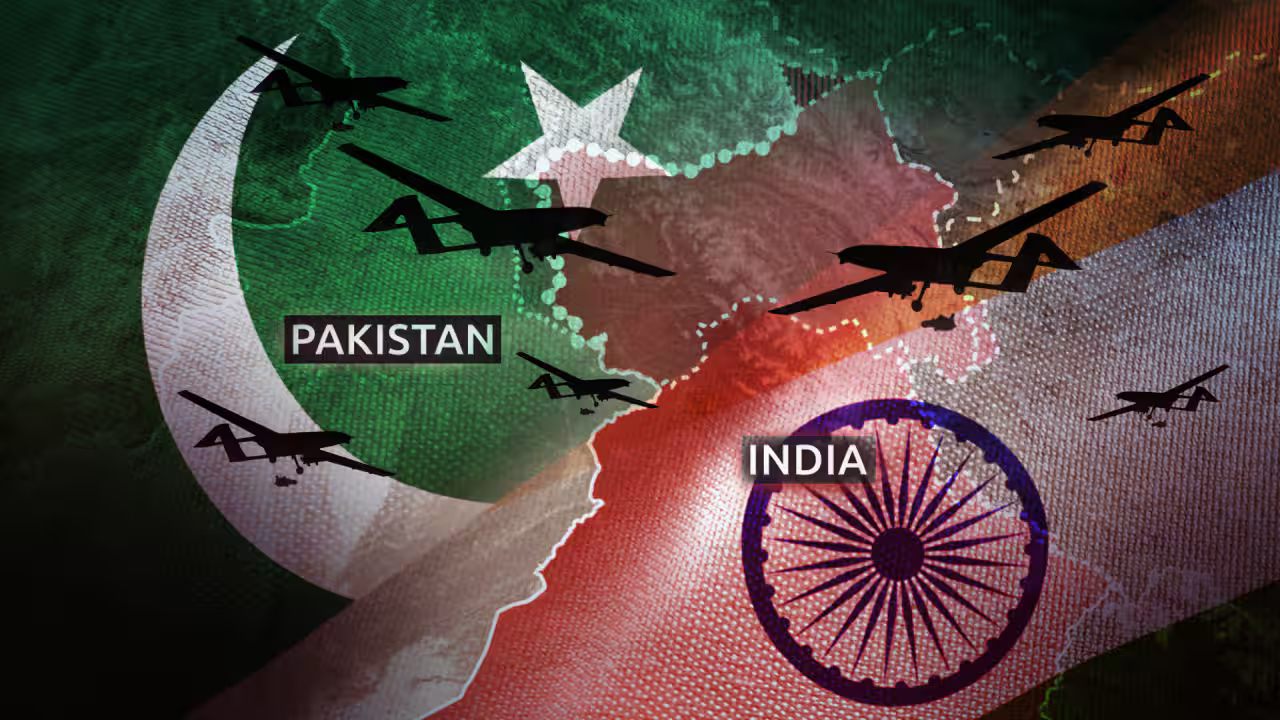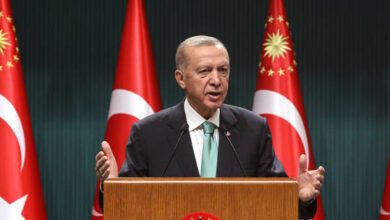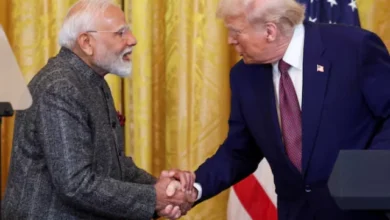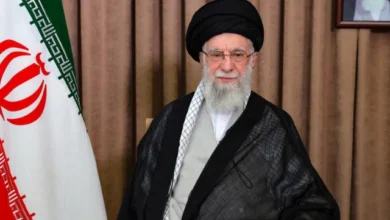Power, when untested, is sacred. But when flaunted without necessity, it risks revealing its limits.
This is the fundamental rule of deterrence: a strong leader should never swing the stick—unless the blow is guaranteed to land cleanly.
Mr. Modi, had the big stick.
He held the advantage of ambiguity, the fear of overwhelming force, the global image of India rising.
But he chose to wield it—not to strike with precision, but to signal bravado.
And in doing so, he revealed its hollowness.
Now the enemy does not fear the stick.
Now the world has seen that India’s air power can be checked.
And Pakistan—the very state your doctrine aimed to erase—has emerged not weakened, but awakened.
This isn’t just a strategic backfire.
It’s a moment that history will mark: the point where India lost leverage not through defeat—but through overreach.
This was never just a skirmish.
It was a full-blown attempt to redraw the map of perception and power.
But India’s move—meant to dominate—ended up exposing its own limits.
The Indian Air Force, long believed to be superior, was tested—and checked.
The stick was swung to break Pakistan.
Instead, the stick snapped mid-air.
Modi’s deeper game was clear:
Push Pakistan to overreact, maybe even reach for the nuclear button.
Turn that into global isolation.
Destroy Pakistan’s credibility.
But Pakistan didn’t blink.
It stood tall—with precision, calm, and strategic clarity.
Backed by Chinese ISR, radar coverage, and missile networks, it turned what could’ve been a rout into a regional rebalancing.
The Rafale myth evaporated.
INS Vikrant quietly backed off.
And the psychological edge—India’s biggest weapon—was lost.
This was about testing the stick.
And in the process, India exposed its own hand—and broke its illusion of supremacy.
The Indian Air Force, once believed to be untouchable, has now been probed, measured, and countered. The entire framework of conventional superiority, long cultivated for a day like this, has collapsed in public view.
Now, the myth is shattered.
The psychological edge is gone.
And the dream of Akhand Bharat—an idea pushed with chest-thumping nationalism—is dead in the water.
Pakistan’s Tryst with History: From Last-Ditch Fantasies to Strategic Rebirth
Last night will be remembered not for what happened—but for what didn’t.
The “fall of Islamabad,” the “destruction of Karachi Port,” the “arrest of General Asim Munir”—all blared across Indian media in a last-ditch attempt to simulate victory, to manufacture a psychological coup.
But it failed.
And in that failure, a new reality was born.
Today, Modi looks north and sees a resurgent alliance—Pakistan and China, closer than ever.
This was Pakistan’s tryst with history: an existential moment met with poise and precision.
What India once mocked as “flying iron pipes” have now redefined deterrence.
Pakistan has delivered one of the most sophisticated demonstrations of layered defense and real-time coordination in modern South Asian history.
And now, as India’s arrogance is subdued, a new era begins—one of less pride, more humility.
The Arab world will no longer look at Modi with the same admiration.
And neither will Trump, or the West.
Because they’ve seen the truth:
Pakistan stands at the confluence of the Karakoram, Silk Road, Wagah, Khyber, and Torkham.
It holds not just geography—but the key to stability across a region of 2.8 billion people.
The strategic map has shifted.
And so has the gaze of the world.
Strategic Forecast: Modi’s Miscalculation and the Rise of a New Balance of Power
What began as a carefully orchestrated display of strength is now unraveling into a textbook case of strategic miscalculation. Modi’s vision was clear: assert dominance, humiliate Pakistan swiftly, and reinforce India’s regional supremacy. The plan relied heavily on air power superiority, built around Rafale jets, INS Vikrant, satellite intelligence, and political bravado. For Modi, the war was 99% on—just waiting for a clean knockout blow.
But that illusion shattered the moment Indian jets entered contested airspace.
The collapse of air supremacy wasn’t caused by brute force—it came from something far more sophisticated: deep, real-time coordination between Pakistan and China. From day one, the Pakistan Air Force had more than radar—it had eyes in orbit. Chinese ISR satellites, Saab Erieye AWACS, and the PL-15 long-range air-to-air missile created a net through which Indian jets could not fly undetected.
The moment India mobilized its forces—concentrating nearly two-thirds of its aerial punch across forward “Tiger” bases—Pakistan was watching. The PAD (Passive Air Defense) systems were quietly tracking. Once IAF fighters took off, only those that released payloads were met with pinpoint retaliation. And the Rafale pilots? According to multiple reports, they never even saw the missile. That’s what happens when a PL-15 is guided by an AWACS from beyond detection range—it becomes a ghost that kills before it’s seen.
This was no dogfight.
This was an ambush by networked warfare.
Even at sea, the illusion crumbled. The INS Vikrant, India’s flagship carrier, reportedly had to retreat after being locked by a Pakistani P-3C Orion—a strategic humiliation delivered not with missiles, but with radar and restraint. It signaled a new deterrent reality: India can be seen. And tracked. And stopped.
Modi’s dream of swift annihilation—of “obliterating Pakistan,” fragmenting it, drying its rivers, destroying its cities—has now been reduced to a distant fantasy.
Geopolitical Fallout
Pakistan, long painted as a “failing state,” has emerged as a credible counterweight.
Not an economic giant, not a second fiddle—but a nation that has successfully held the Indian Air Force in check, and proved its ability to defend both land and sky through precision, not scale.
This wasn’t just a tactical shift.
It was a psychological rupture.
The global Islamic bloc—once ambivalent—is watching with new interest. Because in modern warfare, respect isn’t earned through slogans. It’s earned through deterrence.
Even Indian media, which staged an absurd night of nationalistic euphoria—claiming Islamabad was captured, Asim Munir arrested, Karachi Port destroyed—was forced to wake up in the morning to shame and deletion.
From Zee News to Times Now, fantasy collapsed into silence.
Influencers apologized. Tweets were scrubbed.
Even veteran voices within India called for accountability.
My Prediction
Modi will roll back.
Not because he wants to.
But because now, he has no other choice.
What was once imagined as a clean surgical strike has now become a technical, political, and doctrinal defeat.
The India-Pakistan conflict is no longer unilateral.
It is now a regional balance of power, shaped not by theatrics, but by the deep military integration of the Pakistan-China alliance.
This wasn’t just a setback for Modi.
This was a strategic gift to Pakistan—hand-delivered by the very man who sought its collapse.
He pushed it to happen.
And now, it has happened.
The veil has been lifted.
The balance has shifted.
The myth has died.
Modi—the man once looked up to as the architect of New India, the assertive leader commanding global attention—will now find himself shadowed by a rising counterweight.
Pakistan, once dismissed as a struggling state, now enjoys implicit strategic backing from China’s Western Theater Command, which in any future confrontation will guarantee Pakistan’s territorial integrity. This shifts the balance of power permanently.
The fantasy of Akhand Bharat has evaporated.
That muscular posturing is gone.
It’s time Indians acknowledge a truth their media won’t say aloud:
Pakistan is no longer the Pakistan of the past.
Just watch the composure of the PAF today—calm, precise, and confident.
That is not the demeanor of a “failed state.”
That is the posture of a nation that has held the line—and redrawn it.
Let’s foster peace by first recognizing and respecting each other’s skills and expertise. It’s important that we approach one another with kindness and avoid any form of arrogance or ignorance.







